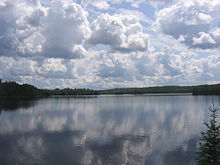International Joint Commission
Canada and the United States created the International Joint Commission because they recognized that each country is affected by the other's actions in lake and river systems along the border.
The treaty provides general principles, rather than detailed prescriptions, for preventing and resolving disputes over waters shared between the two countries and for settling other transboundary issues.
The IJC has two main responsibilities: approving projects that affect water levels and flows across the boundary and investigating transboundary issues and recommending solutions.
The International Joint Commission prevents and resolves disputes between the United States and Canada under the 1909 Boundary Waters Treaty and pursues the common good of both countries as an independent and objective advisor to the two governments.
These orders place conditions on the application and operation of projects, such as dams, diversions or bridges that would affect the natural level of boundary waters.
When asked by governments, the IJC investigates, monitors and recommends actions regarding the quality of water in lakes and rivers along the Canada-United States border.
As well as damaging rivers and lakes, air pollution affects human health, especially for people with respiratory illnesses such as chronic bronchitis and asthma.
Over the years, the American and Canadian governments have asked the IJC to bring to their attention, or to investigate, air pollution problems in boundary regions.
For example, one reference led to the Great Lakes Water Quality Agreement (1972), in which the two countries agreed to control pollution and to clean up wastewater from industries and communities.
In 1978, a new agreement added a commitment to rid the Great Lakes of persistent toxic substances, which remain in the environment for a long time and can poison food sources for animals and people.

